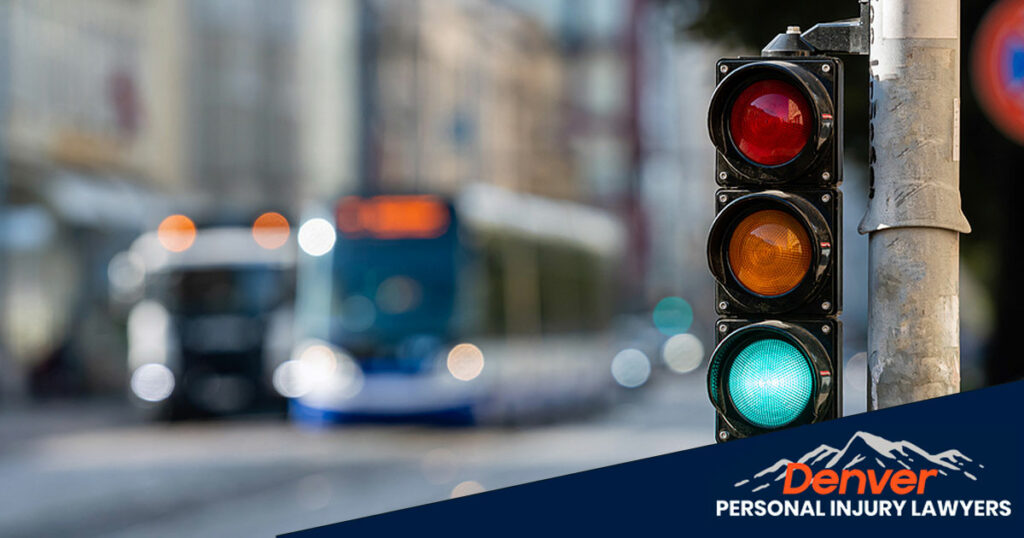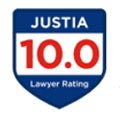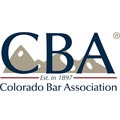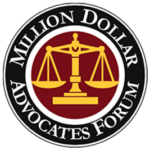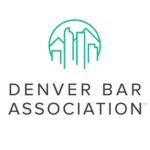Car accidents at flashing traffic signals in Denver are more common than you might think and can leave everyone confused about who’s at fault. Determining fault is critical when filing a personal injury claim or seeking legal advice. Drivers need to understand how to navigate these intersections to avoid accidents. When mishaps occur, knowing who’s responsible is essential for handling insurance claims and any potential lawsuits.
This article aims to help you understand your rights and responsibilities in these situations. Understanding how fault is determined can guide your post-accident decisions. We’ll dive into the specifics of Denver car accidents at flashing traffic signals, clarifying the legal maze and outlining potential compensation.
Table of Contents
ToggleUnderstanding Traffic Signal Rules in Colorado
Flashing signals are quite common in Denver, due to power issues from bad weather and road work. Colorado traffic laws provide clear guidelines on how to navigate flashing signals. While you can generally assume to treat these semi-operational intersections as four-way stops, CRS section 42-4-605 outlines specific rules for encountering these signals.
Flashing Red Light
- Stop: Treat a flashing red light like a stop sign. Come to a complete stop at the marked stop line.
- Proceed with Caution: After stopping, yield to all other traffic and pedestrians before proceeding.
Flashing Yellow Light
- Slow Down: A flashing yellow light means slow down and proceed with caution.
- No Stop Required: You do not have to come to a complete stop unless it is necessary for safety.
Importance of Adhering to Traffic Control Devices
Following these rules is vital for several reasons:
- Safety: Proper adherence reduces the risk of accidents.
- Liability: Obeying traffic control devices helps establish fault in case of an accident. Failure to follow these rules can make you liable for damages.
Understanding and following Colorado’s traffic signal rules can protect you legally and physically on the road.
Determining Fault in Car Accidents at Flashing Signals
Determining who is at fault in car accidents at intersections with flashing signals can be complex. These situations often involve multiple factors and require a thorough understanding of traffic laws and driver responsibilities.
The Importance of Right of Way
At flashing signals, the concept of right of way is crucial. Drivers must understand and respect who has the right to proceed. For example:
- Flashing Red Light: Stop completely, then proceed when safe.
- Flashing Yellow Light: Proceed with caution, yielding to other vehicles and pedestrians.
Duty of Care and Negligence
Drivers owe a duty of care to each other and pedestrians. This means they must act responsibly and avoid negligent behaviors. Examples of negligence include:
- Ignoring the flashing signal rules
- Driving distracted
- Failing to yield when required
Breach of Duty and Fault Determination
When an accident occurs, fault determination often depends on whether a driver breached this duty of care. Did they ignore a flashing red light? Were they distracted? Did they fail to yield?
Understanding these aspects is essential for anyone involved in such accidents. It helps in assessing liability and seeking compensation for damages.
Common Causes and Legal Consequences of Accidents at Flashing Signals
Accidents at flashing traffic signals often occur due to several common factors:
- Confusion about traffic rules: Many drivers are unsure how to properly respond to flashing signals, leading to hesitation, improper yielding, or misjudgment of other drivers’ actions.
- Distracted driving: Using a phone, eating, or adjusting the radio takes attention away from the road, increasing the risk of missing or misunderstanding flashing signals.
- Yellow light accidents: Drivers might speed up to beat the light, leading to collisions as other vehicles proceed based on the flashing signals.
- Drunk driving: Impaired drivers have slower reaction times and poor judgment, making it challenging to navigate through flashing signal intersections safely.
Types of Car Accidents at Flashing Traffic Signals
Accidents at flashing traffic signals can result in various types of collisions, each with unique causes and consequences:
- T-Bone Collisions: Occur when the front of one vehicle crashes into the side of another, often due to a driver failing to yield or misjudging the signal. These accidents can be particularly dangerous at intersections.
- Side-Swipe Collisions: Happen when two vehicles traveling in parallel lanes make contact, often because one driver is distracted or misinterprets the flashing signal.
- Rear-End Collisions: These occur when a driver fails to stop in time, crashing into the vehicle in front of them. Distracted driving or sudden stops at flashing signals frequently cause these accidents.
- Head-On Collisions: Though less common at flashing signals, these can occur if a driver crosses into oncoming traffic, misjudging the signal.
- Pedestrian Accidents: Flashing signals can also be confusing for pedestrians, resulting in accidents if drivers are not attentive or if pedestrians misinterpret the signals.
- Multi-Vehicle Pile-Ups: Often a result of chain reactions where one collision leads to several others, especially in high-traffic areas where flashing signals may be misinterpreted.
Common Injuries from Car Accidents at Flashing Traffic Signals
These collisions can lead to a range of injuries that require medical treatment and incur significant costs:
- Whiplash: Sudden jerking motions during a collision can cause neck strain and pain.
- Fractures: The impact of an accident can result in broken bones, requiring immediate and often long-term medical care.
- Traumatic Brain Injuries: Severe head impacts can lead to concussions or more serious brain injuries, necessitating extensive treatment and rehabilitation.
- Spinal Cord Injuries: Damage to the spinal cord can result in partial or complete paralysis, demanding intensive medical intervention and ongoing care.
Legal Consequences and Compensation
Determining liability in accidents at flashing traffic signals is critical for seeking compensation. Legal consequences and steps include:
- Comparative Negligence: In some cases, both parties may share fault—for example, if one driver didn’t yield while the other was speeding.
- Liability Determination: Analyzing evidence and applying Colorado traffic laws is essential for understanding fault and pursuing claims.
Understanding fault in Denver car accidents at flashing traffic signals involves a thorough investigation and a solid grasp of local traffic laws. If you or a loved one is affected, pursuing legal action can help cover medical treatment and associated costs through claims or litigation.
Steps to Take After a Car Accident at a Flashing Signal
After a car accident at a flashing signal, immediate steps can protect your health and legal interests:
- Contact Law Enforcement: Always call the police. A police report after an accident provides an official account, vital for insurance claims and potential legal proceedings.
- Seek Medical Attention: Even if injuries seem minor, consult a healthcare professional. Some injuries manifest later and early documentation is crucial.
- Document the Scene: Take photos of the vehicles, damage, traffic signals, and any visible injuries. Gather contact information from witnesses.
- Exchange Information: Swap contact and insurance details with the other driver(s).
- Avoid Admitting Fault: Do not discuss the accident’s specifics or admit fault at the scene.
Consulting with an experienced Denver car accident attorney can simplify navigating these situations:
- Expert Analysis: An attorney can identify who’s at fault, especially in complex cases involving yellow light accidents.
- Legal Representation: Professional help ensures you handle insurance claims and legal procedures effectively.
Finding legal advice for yellow light accidents promptly can prevent significant issues like underestimated damages or low settlement offers.
Handling Insurance Claims Following an Accident at a Flashing Traffic Signal
Insurance companies play a significant role in determining compensation for car accidents, and their decisions often depend on who is found at fault. In cases involving accidents at flashing traffic signals, insurers carefully examine the available evidence to decide who is liable.
Key Evidence:
- Witness Statements: Eyewitness accounts can provide crucial insights into driver behavior and actions leading up to the accident.
- Traffic Camera Footage: Cameras at intersections may capture the incident, offering an unbiased perspective of the events.
Maximizing Compensation:
- Document All Damages Thoroughly: Keep records of medical bills, vehicle repair costs, and any other related expenses. Photographs of the scene and damages can also support your claim.
- Avoid Recorded Statements: Insurance adjusters may use recorded statements against you. Always consult with your attorney before providing any statements.
These steps help ensure fair compensation for your losses.
How an Expert Denver Car Accident Attorney Can Provide Essential Guidance
An expert Denver car accident attorney can analyze the specifics of your case to determine who’s at fault in Denver car accidents at flashing traffic signals. Understanding the nuances of traffic laws and the specifics of your case is crucial. An attorney ensures you have professional representation to navigate complex insurance claims and legal procedures, maximizing your chances for fair compensation.
Benefits of Hiring an Attorney:
- Thorough Case Analysis: An attorney will review all aspects of your accident, including traffic signal rules, witness statements, and available evidence.
- Professional Representation: Legal experts handle negotiations with insurance companies, ensuring they don’t undervalue your claim.
- Maximized Compensation: Attorneys understand how to document damages thoroughly, including medical expenses, lost wages, and pain and suffering.
Without legal assistance, you may face significant problems:
- Underestimating Damages: It’s easy to overlook long-term costs without expert advice.
- Missing Critical Deadlines: Legal procedures have strict deadlines that must be met.
- Pressure from Insurance Companies: Insurers might push you to accept low settlement offers quickly.
Hiring a skilled attorney provides peace of mind and increases the likelihood of a favorable outcome in your case.
Contact a Denver Car Accident Attorney For a Free Consultation
Determining fault in Denver car accidents at flashing traffic signals can be complex. Denver Personal Injury Lawyers® stands out for its exceptional track record, client dedication, and community ties.
We pride ourselves on a history of winning cases. Our experienced attorneys navigate the complexities of liability and insurance claims to ensure you receive deserved compensation.
We understand the impact of a car accident and provide personalized support through every step of the legal process. Your well-being is our top priority.
Our deep roots in Denver and understanding of Colorado traffic laws position us uniquely to advocate effectively on your behalf.
Benefits of a Free Consultation
Schedule a free consultation to:
- Expert Analysis: Understand your legal options.
- Liability Clarification: Learn about fault determination in complex scenarios.
- Tailored Advice: Receive professional guidance without upfront costs.
With us, you gain a dedicated advocate who handles legal complexities so you can focus on recovery.
Don’t Wait—Contact Us for Your Free Consultation Today!
Let us bring clarity and action to your situation. Schedule your free consultation now with Denver Personal Injury Lawyers®.
Making a Difference in the Lives of the People of Denver
If you or a loved one has been seriously injured in an accident, we are here to help. As Denver Personal Injury Lawyers, you are our priority, we listen to your needs and provide individual attention from start to finish. Through persistence, experience, and legal expertise, we handle the insurance companies and medical providers so that you can focus on recovering.
For more information please contact us at Denver Personal Injury Lawyers® to schedule a free consultation with an attorney today. We have five convenient locations in Denver and its surrounding areas to better serve you.
Denver Personal Injury Lawyers®
1001 Bannock St #8
Denver, CO 80204
(720) 500-4878
Denver Personal Injury Lawyers® | Arvada Office
5610 Ward Rd #300
Arvada, CO 80002
(720) 500-4878
Denver Personal Injury Lawyers® | Aurora Office
3190 S Vaughn Way St #550
Aurora, CO 80014
(720) 500-4878
Denver Personal Injury Lawyers® | Centennial Office
9200 E Mineral Ave #100
Centennial, CO 80112
(720) 500-4878
Denver Personal Injury Lawyers® | Lakewood Office
355 S Teller St #200
Lakewood, CO 80226
(720) 500-4878

